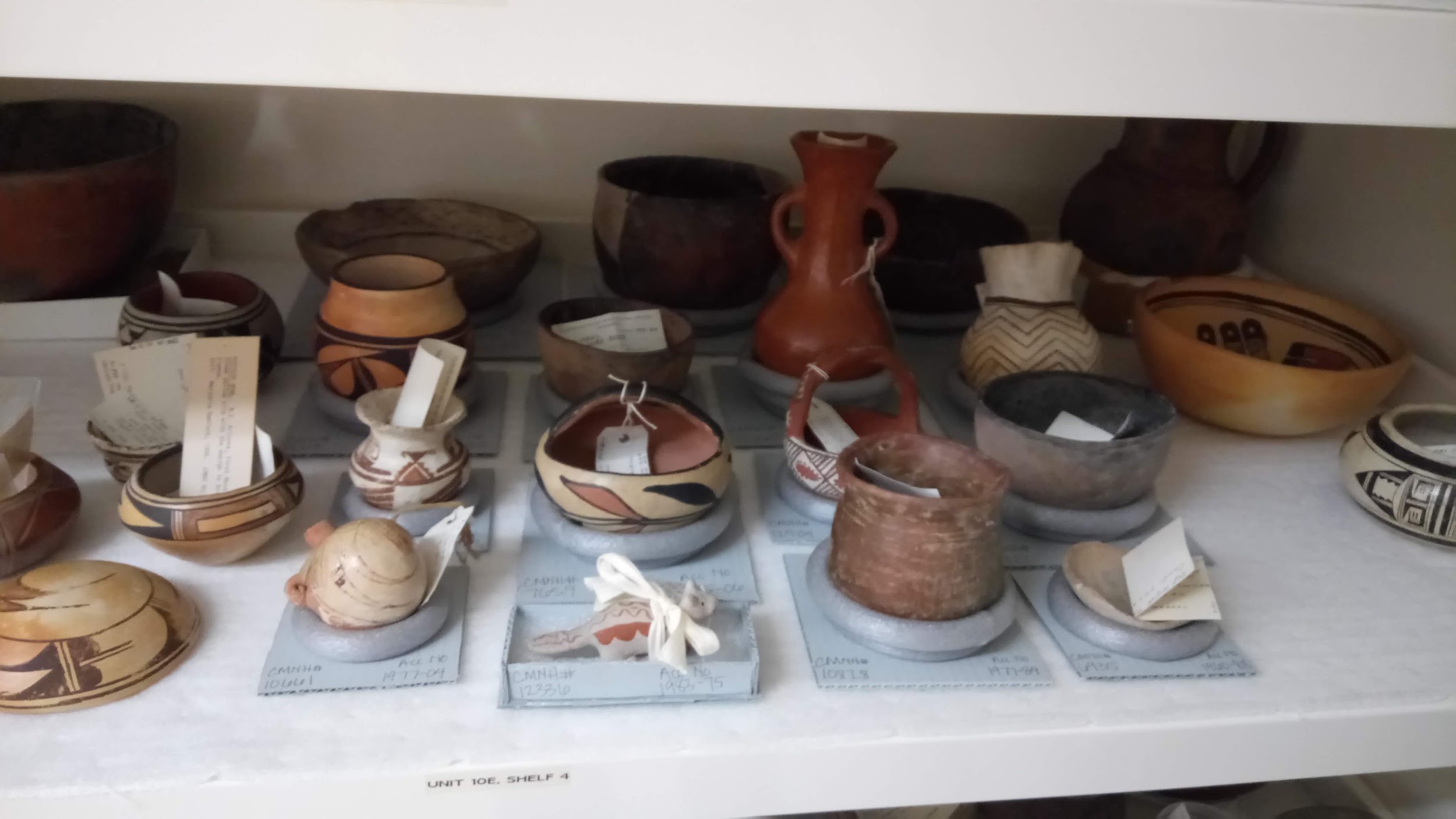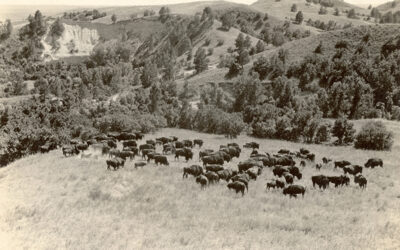Being an archeology collections manager means you are responsible for the care and preservation of numerous items; some collections consist of thousands of items, while others range into the millions. So what do we do with all this stuff?
Being a collections manager means you are responsible for the care and preservation of numerous items; some collections consist of thousands of items, while others range into the millions. Very often the tasks of organizing, preserving and properly documenting these items fall to a single employee with the generous help of a volunteer(s). Despite the many challenges associated with the position, their work is critical to ensuring that the items are accessible for research, exhibition, and educational purposes.

Ceramic sherds with tags
One of the most essential functions of efficiently managing a collection is to know what the collection has and where those items are located. This may seem like too obvious a thing to state, and yet many collections either have out of date databases or a backlog of cataloging work to do, among other possibilities. In order to best track items, one of the first things that ought to be done when objects enter a collection is for them to be assigned a catalog number, which is a unique number allowing the item to be identified. This number can be either physically written onto the item (using archival quality ink) and/or have an archival tag placed with or attached to it.
Once given its catalog number, there has to be a system in place to input all of that data. In the past, this was done with a card filing system, but today there are several software options that can manage this data and make it available either on a local network or through the cloud. Regardless of how your database operates, it is essential that the means of inputting and removing data are efficient and reliable. Not only does the security and intellectual control of the collection depend on this, but it also increases the collection’s research value and utilization by others.
To ensure objects can be studied and enjoyed well into the future, collections managers also oversee the physical care of collections. This is very often in the form of preventive conservation, the goal of which is to reduce deterioration of the objects. Housing objects in climate-controlled environments, as well as cabinets, helps protect collections from the damaging effects of fluctuating relative humidity (RH), temperatures, exposure to light, dust, and pests. For example, exposing leather items to unstable RH and temperature can cause those objects to become dry and brittle, to crack, or might encourage mold growth. In archeological collections, materials such as ceramics and lithics are not as climate-sensitive as leather, metal, or wood and can therefore withstand gradual changes in RH or temperature. Hence, different kinds of items require different preservation techniques and equipment. Another form of preventive conservation is ensuring objects are housed using appropriate archival quality materials. Materials such as cardboard, different kinds of wood, and some plastics can be somewhat acidic or undergo off-gassing, both of which can damage the collection items that they house.

Complete ceramics. Due to their rounded base, some are housed on archival quality blue-board with ring mounts.
While no collections management system will ever be ideal, the reality is that many institutions housing archeological collections are still working towards satisfying even the basic standards just discussed. Often, institutions are underfunded and understaffed, making the challenges of managing collections even more difficult to overcome. Although improvements are continually being made in collections, it’s important to never settle. Donating to local cultural institutions and historical societies helps to continue protecting these invaluable collections and helps keep them available to those who wish to learn.
Authored by Patricia Patton, Cleveland Museum of Natural History
Resources on managing archeological collections:
https://www.nps.gov/museum/publications/MHI/AppendI.pdf



